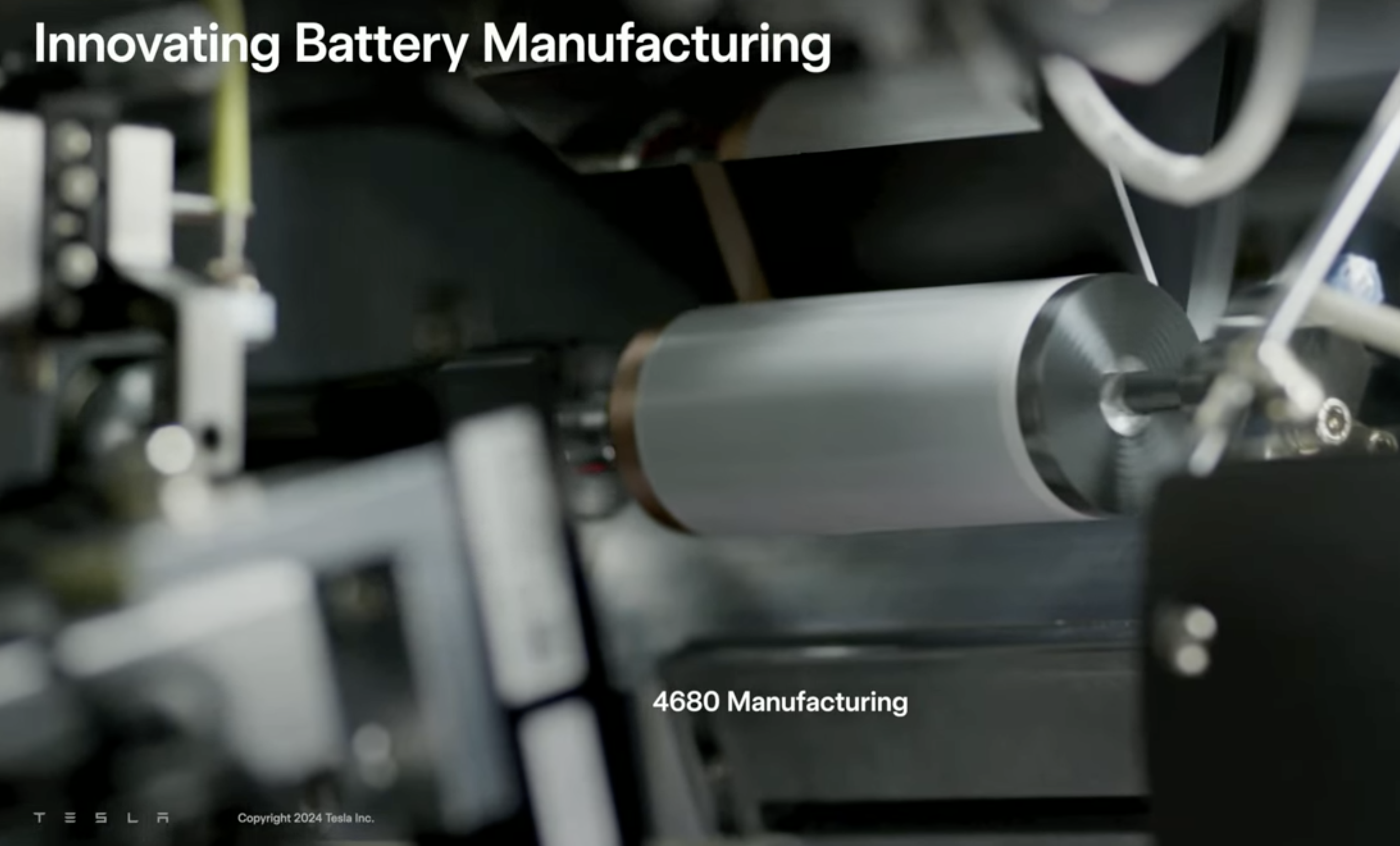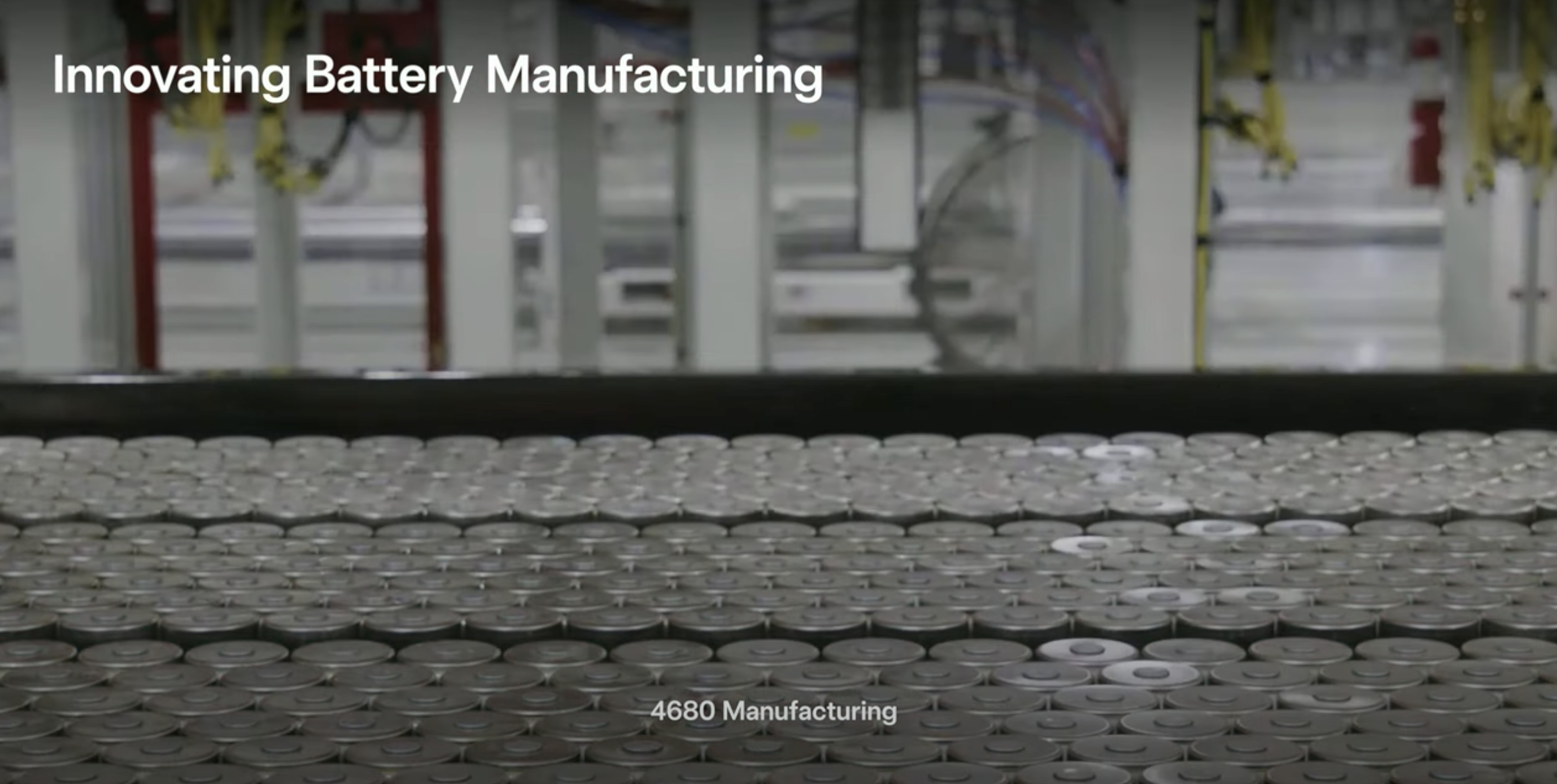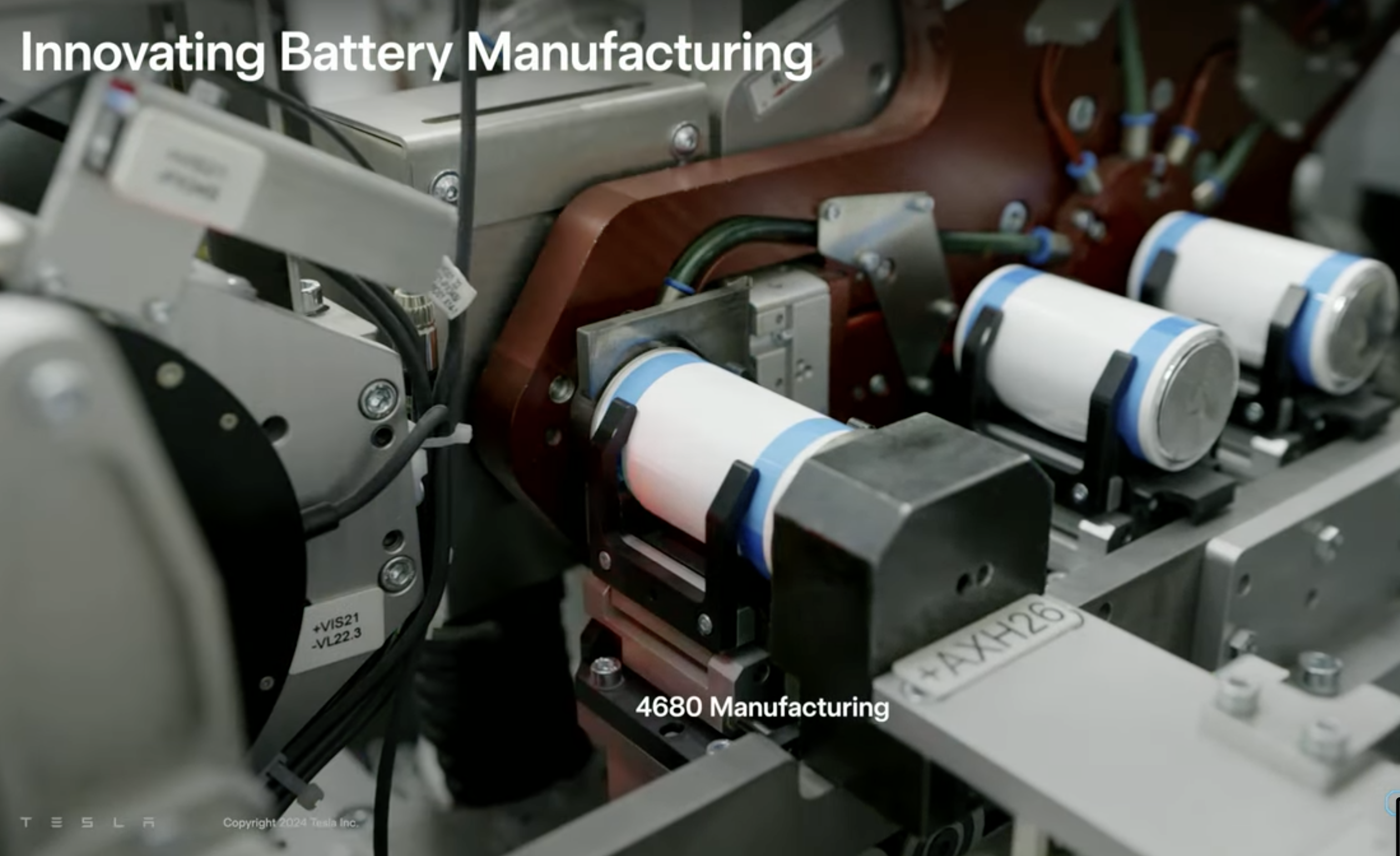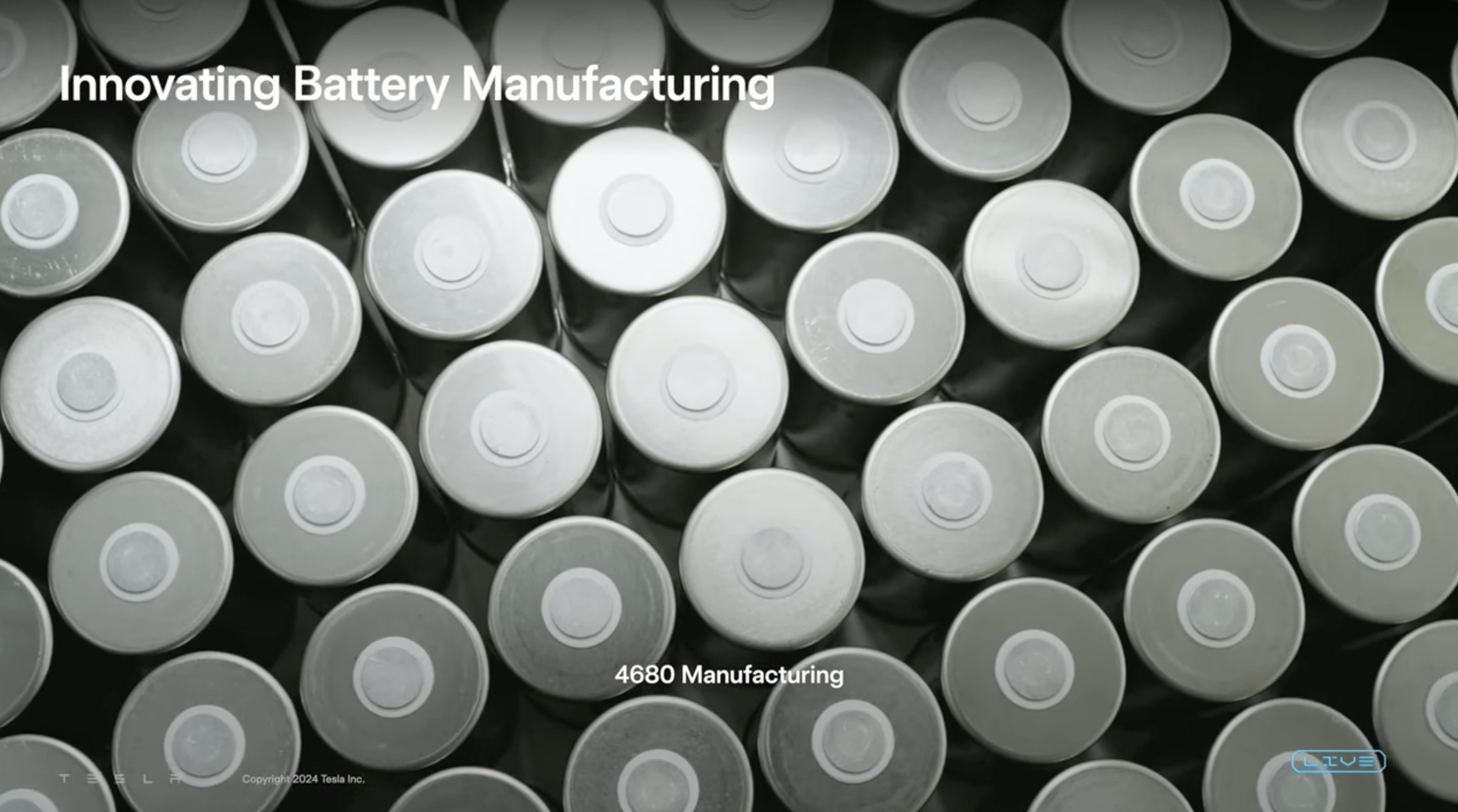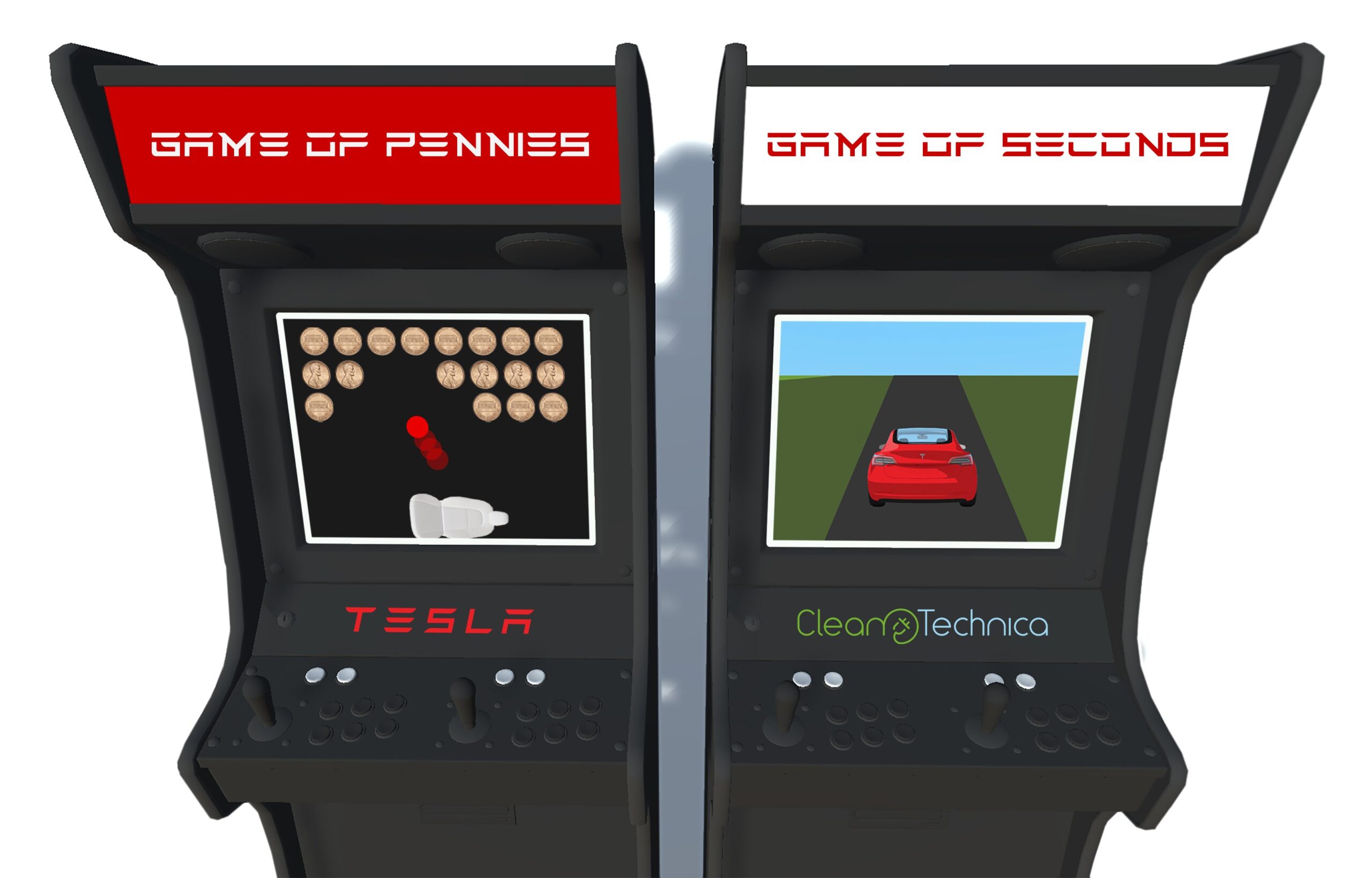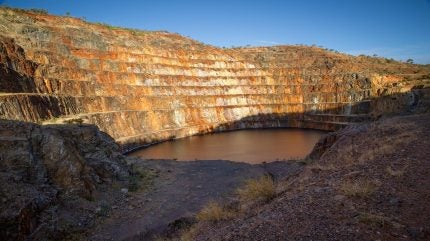Sign up for daily news updates from CleanTechnica on email. Or follow us on Google News!
There were a couple of segments of Tesla’s 2024 annual shareholder meeting that stood out to me as particularly interesting with regards to Tesla battery production. The first part was from Tesla’s main presentation, and I’ll start with that. However, the big information actually came toward the end of the meeting in the Q&A session.
To start with, at 1:10:40, Musk states: “And we’re also innovating a lot in battery production with the 4680 that’s built right here. It is — it’s a hard problem, you know, like there are entire companies that just make battery cells. That’s all they do. But we’re making good progress. All the Cybertrucks that you see use the 4680 cell. And we have a clear path to the 4680 being, we think, probably the most competitive cell from a manufacturing efficiency standpoint.”
Well, that’s a big statement there already — Elon Musk thinks Tesla’s 4680 battery cell can become the most competitive battery cell out there in terms of manufacturing efficiency, which one presumes would help it in terms of cost-competitiveness as well. This statement is basically the teaser that led to the question at the end of the meeting, but let’s keep going on what was said in the main presentation first.
“But it is, it is a hard problem, I have to say. There’s quite a lot of brain damage that’s required to be good at cell manufacturing. Hahaha. It’s like a brain damage high. Hehehe. But I think it does — it does give Tesla resilience if there are changes in the, I don’t know, geopolitical situation, somehow. Haha. But it’s good to have some independence in cell manufacturing.”
Indeed, one wouldn’t want to be under the thumb of China too much if geopolitical issues between the US and China heated up. Tesla’s battery supply from China could then dry up. Indeed, this is one crucial reason for requirements in the Inflation Reduction Act of 2022 that Democrats and Joe Biden passed and signed into law that aim to make US automakers and the US economy less dependent on Chinese batteries and battery materials.
“And we’re making steady progress. And we also have the cathode refinery, which you can see behind the main factory. So, you can sort of see in the picture there. That’s the cathode refinery. And then we’ve got the lithium refinery in South Texas. So, we’re just kind of making sure we’ve got the pieces of the puzzle.”
So, in short, it is notable and impressive that Tesla is engaged in its own cathode and lithium refining.
“If you were to look at sort of a video of how Tesla does, say, cathode and lithium refining, and how the rest of industry does it, it’s night and day. I mean, you can sort of eat off the floor in the Tesla refinery, and I would not recommend doing so in the others.”
Wowza!
“So, it’s very — we’re definitely going very vertical here. But I think this is a, it’s a wise investment that will pay off more than people realize.”
That was it from the main presentation — certainly interesting, but nothing groundbreaking or new.
Toward the end of the event, though, one questioner noted that it had been 4 years since Battery Day and asked for a little more info on the 4680 battery cells and Tesla’s targets to make the battery more affordable. Here’s where things got interesting, after a bit of chatter about the overall market. Musk notes:
“So, achieving affordability is actually at this point, um, more about the rest of the car than it is actually about the battery pack. The price per kilowatt-hour of cells from suppliers has dropped dramatically. So, there was a massive spike for a few years in the cost of lithium-ion cells from suppliers because every car manufacturer put in gigantic orders for battery packs — like giant, giant orders. So the price of, like, of lithium and all the raw materials and the battery cells went crazy — it doubled. Like, the price of cells doubled. Price of lithium I think went up, almost like, 5-fold or like 500% — like went up crazy numbers.
“So, since then, the demand — like, battery cell suppliers have increased their supply, and, um, the orders from other car manufacturers have declined. So, I mean, it is worth noting it’s tough sledding out there for EVs. […]”
He then talked a bit about the “game of pennies,” reducing various little costs by pennies. And then he made the statements that really jumped out to me, so I’m going to bold this whole next section.
“Now, with respect to our own cell production, we do see a path to cost parity by the end of this year — a very difficult path to cost parity. Currently, our 4680s cost more than our suppliers’. Now, they cost more than the suppliers’ today, but they cost less than the suppliers’ a year ago. So, you know, there’s a bit of a feast–famine thing with battery cell supply. It’s kind of like for DRAM chips — you know, like, the DRAM industry goes from like oversupply to undersupply; the price of DRAM changes like crazy. It’s kind of like that for cells. Um, so, but we expect to achieve cost parity even with the much lower supplier cell price today by the end of the year.“
This is potentially a big deal. The explanation makes sense — we’re all aware of the boom-bust cycles of technology and scaling up new industries. Even just in cleantech, we’ve seen it with solar panels, wind turbines, battery cells, and lithium. So, it’s understandable that the battery industry hit a period of oversupply and Tesla’s 4680 battery cells weren’t as competitive as it’d been assumed they’d be. But the news that Tesla has indeed been making progress on them and driving down costs, and the company expects them to be cost competitive by the end of the year, is certainly notable. Of course, there’s the question of whether the big dogs in the battery industry (CATL, LG, SK On, etc.) are going to continue innovating and driving down costs faster. But I have to say that I’m more optimistic about Tesla’s battery developments from the end of this long response to the question than I’ve been … since Tesla Battery Day four years ago? We’ll see what happens.
Have a tip for CleanTechnica? Want to advertise? Want to suggest a guest for our CleanTech Talk podcast? Contact us here.
Latest CleanTechnica.TV Videos
CleanTechnica uses affiliate links. See our policy here.

